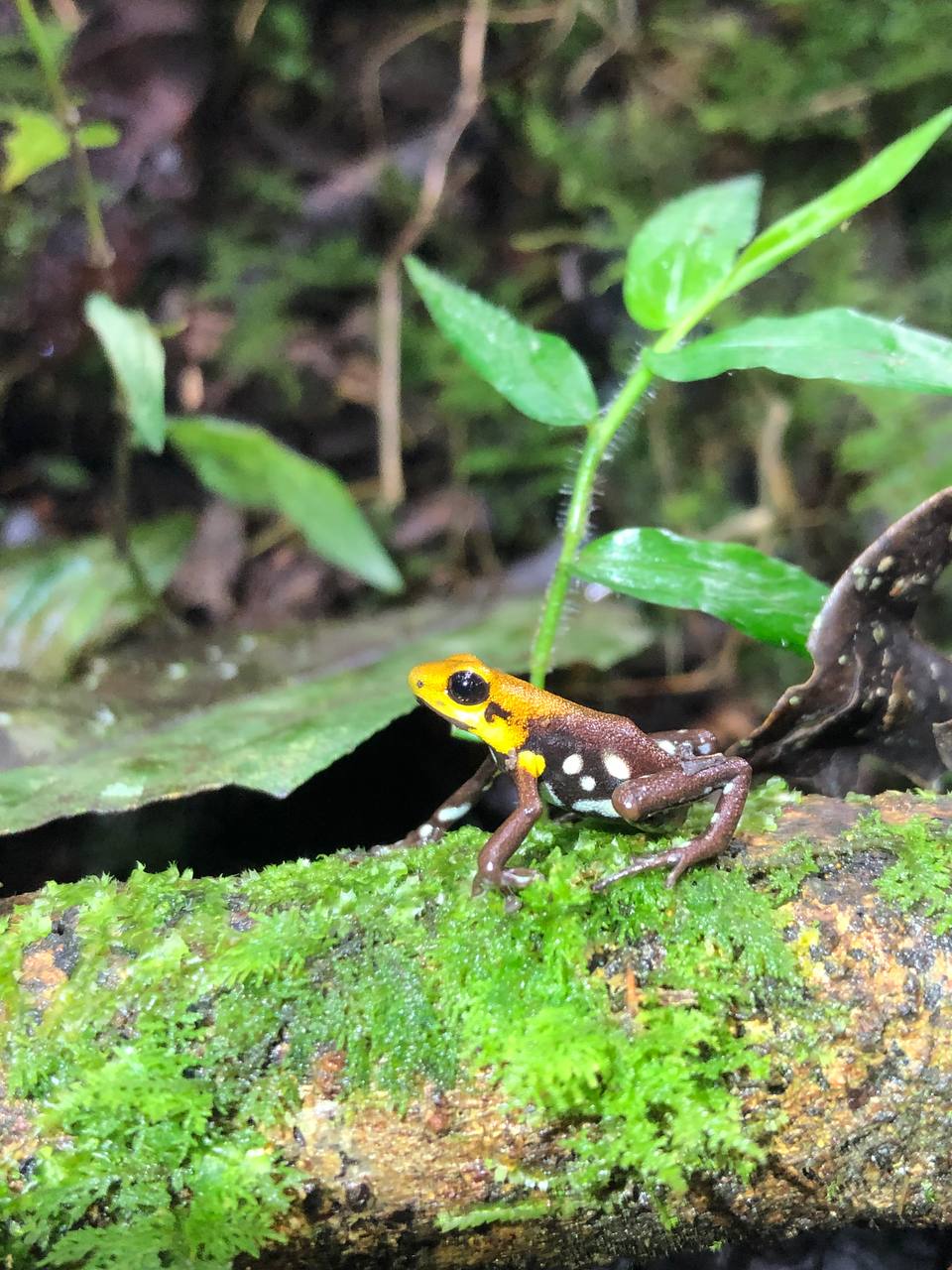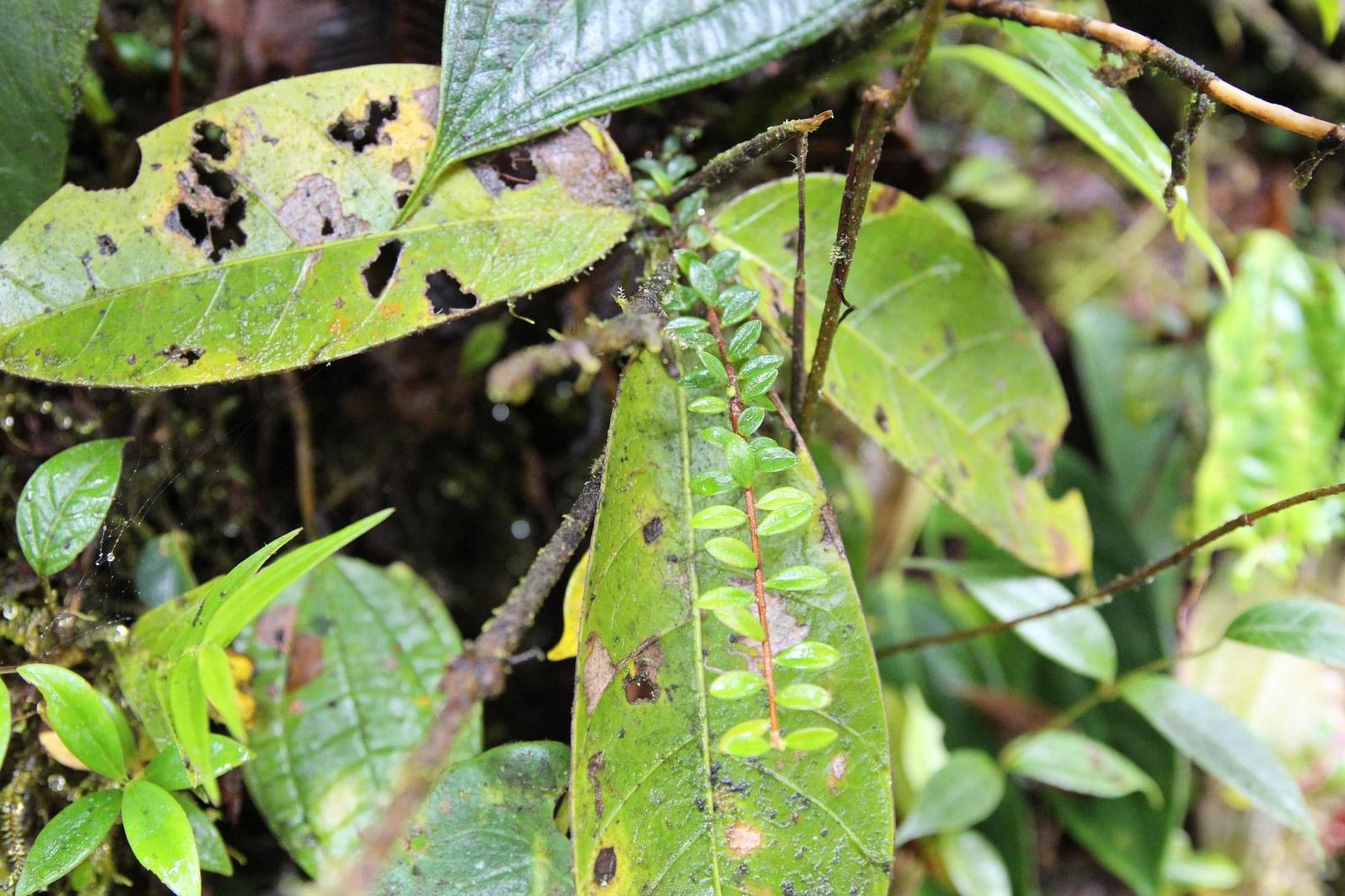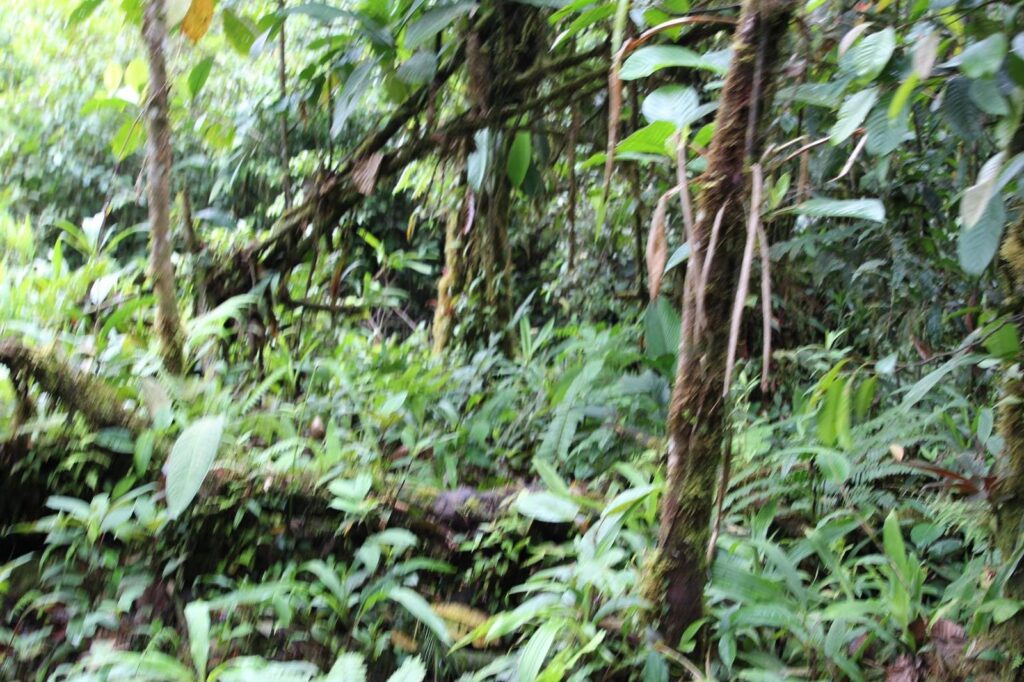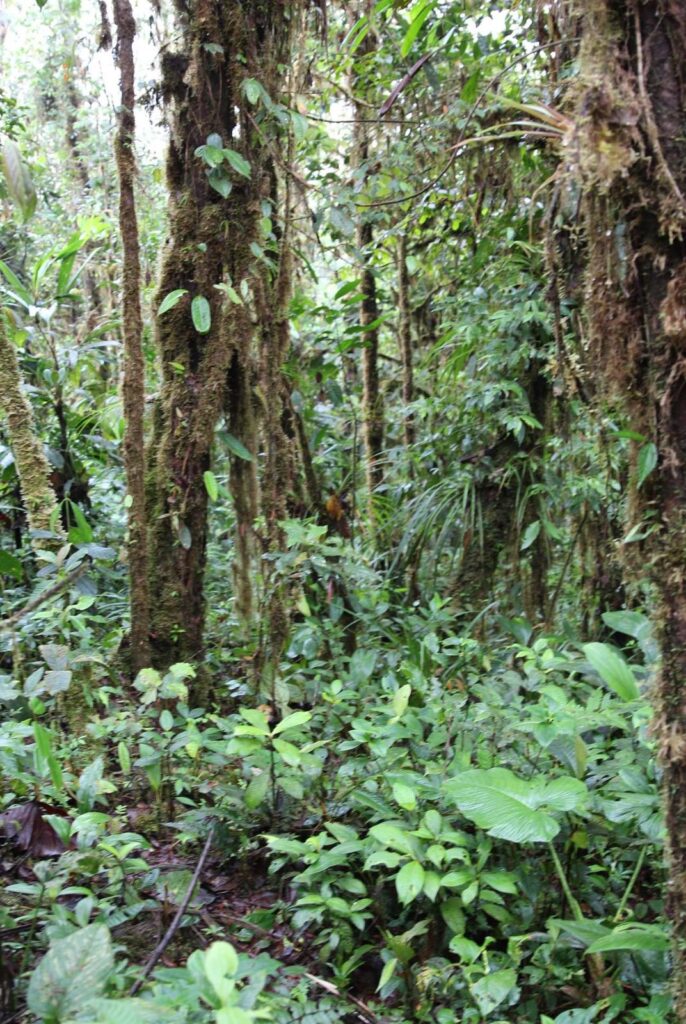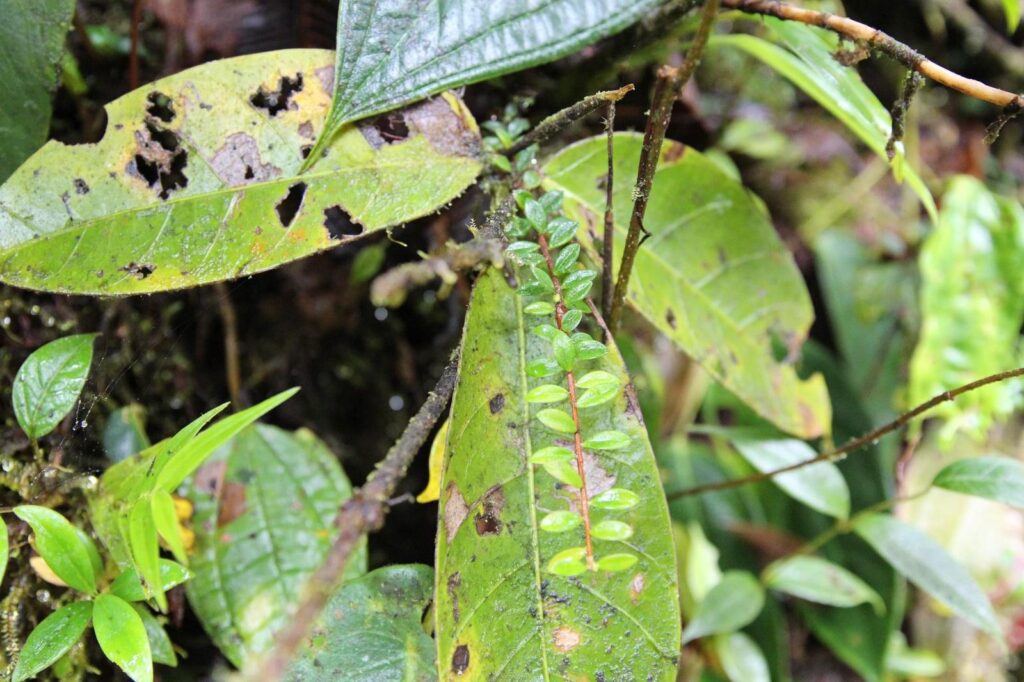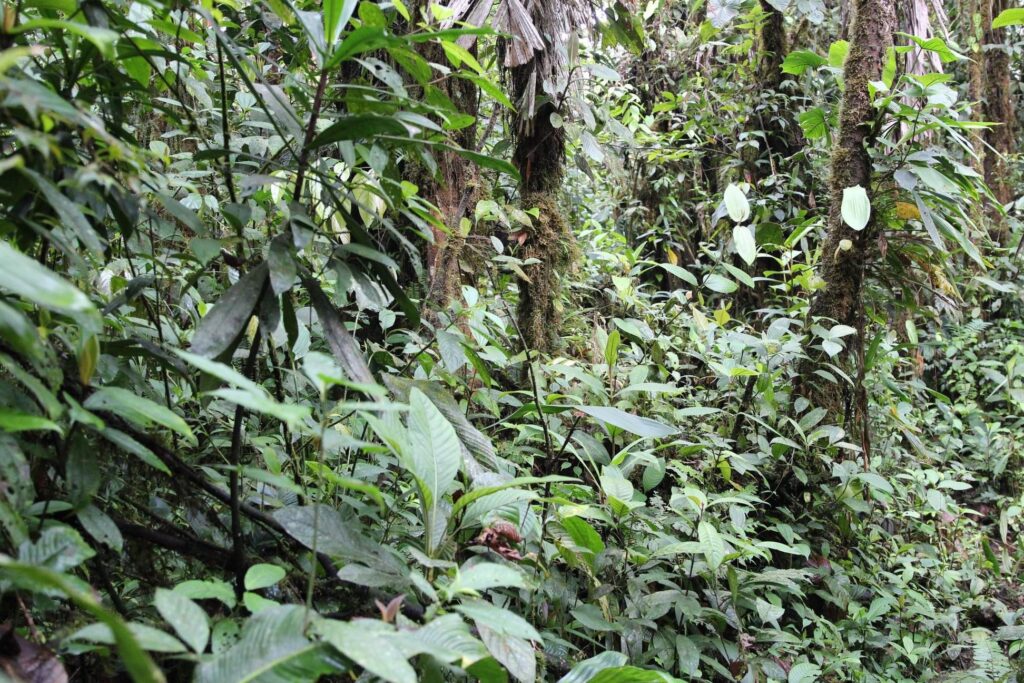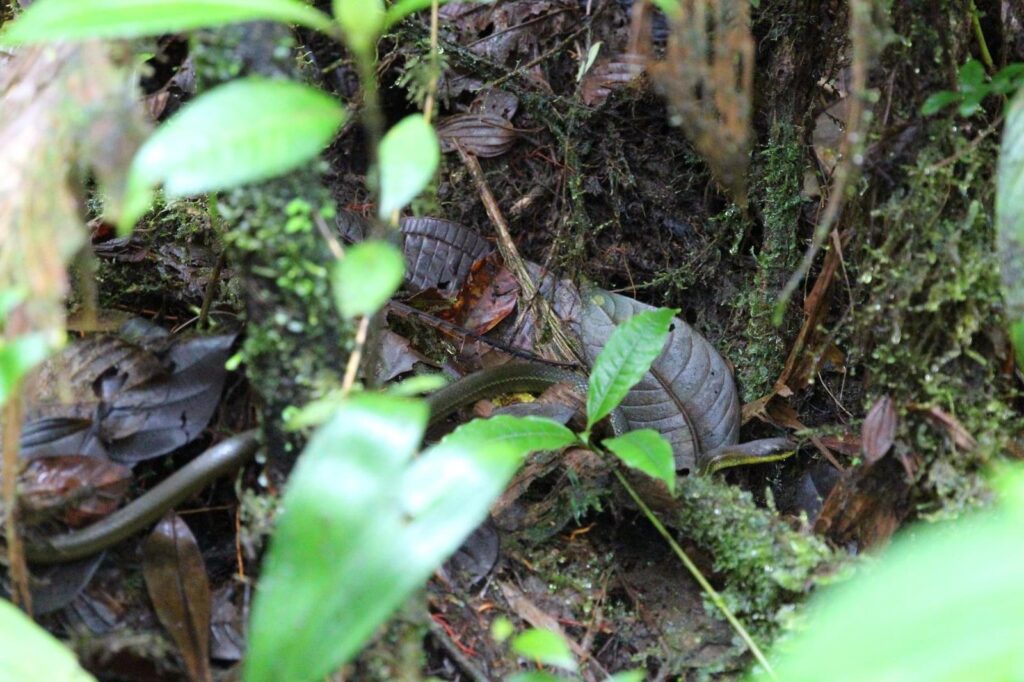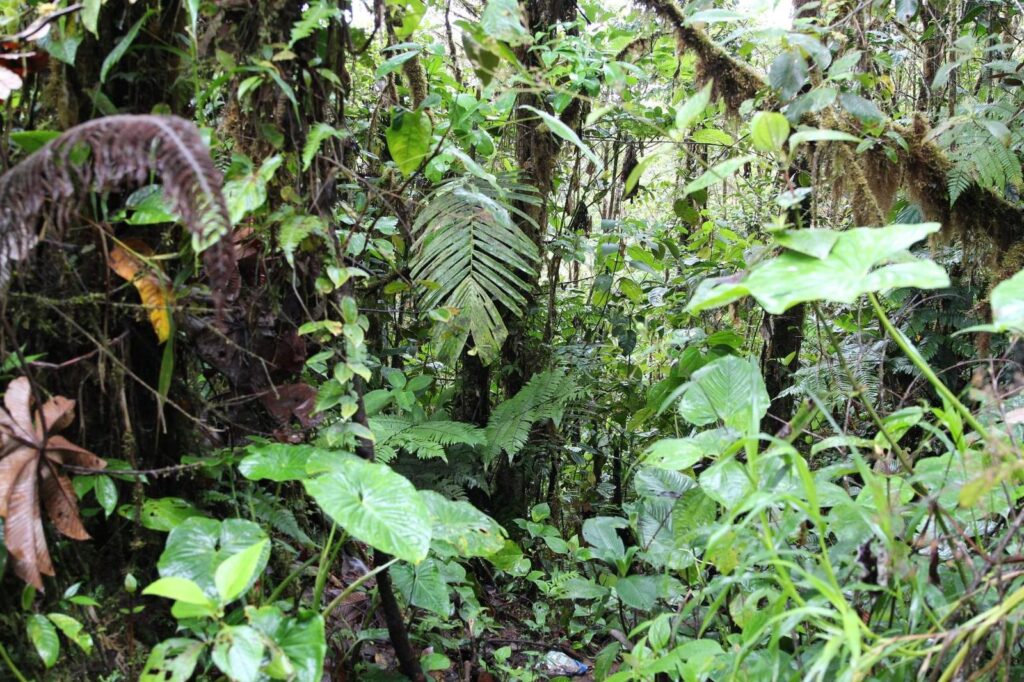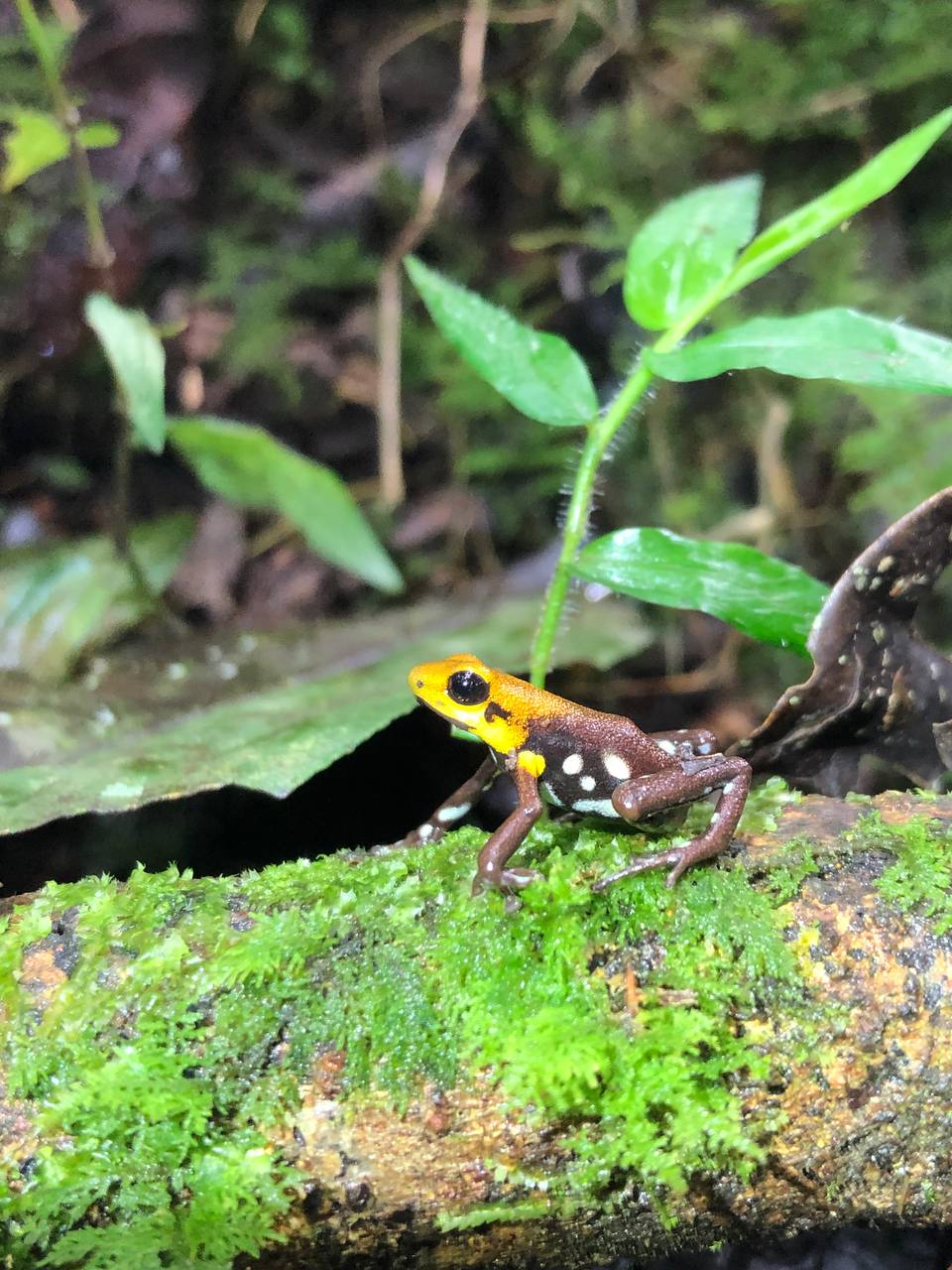The Active Conservation Alliance (ACA) suggests the creation of private reserve areas to initiate reforestation projects and reintroduction of specimens born in captivity to help recover the populations of this species, classified as Critically Endangered by the International Union for Conservation of Nature (IUCN). This amphibian has already lost 90 percent of its habitat.
In Supatá, a town located two hours from Bogotá, the capital of Colombia, lives a golden frog, a truly tiny animal, the size of an almond.
Since always, individuals of the species have been natural explorers and often perceived that the territory where they settled, and spontaneously adapted, was a paradise.
There they hopped in the middle of streams, got to know the forest plants, kept an eye on their predators hidden among the branches of some vine, reproduced comfortably, and fed without hesitation, usually on insects, the preferred diet of amphibians.
Sometimes, they rested for hours in the puddles that the rain usually formed among the leaves of bromeliads, where they also took the opportunity to care for their offspring. A normal and even ideal life for a group of golden frogs.
However, a few years ago, things began to change, and the habitat that sheltered them transformed.
The men who have also lived in Supatá for years began to cut down the forest to replace it with agricultural crops that dried up and polluted the streams. Things worsened when they themselves, in some spaces, introduced cattle. And cows, when out of control, trample everything in their path.
Many golden frogs began to die. To the point that the International Union for Conservation of Nature (IUCN) says that, due to the deterioration of that originally wonderful home, the few that still survive are Critically Endangered.
It recently appeared
The existence of golden frogs remained hidden from science for years.
They were only first seen in 2005. And their description, that is, the study that led expert biologists to say they were different from the others and that they only inhabited those lands of Supatá (an endemic species that cannot be seen anywhere else in the world), was only finalized two years ago, in 2021. Since then, they proudly carry a scientific name that groups them: Andinobates supata.
Recent studies say that more than 90% of that forest where they took refuge has been logged. And with such a small home and surrounded by so many threats, their vulnerability increases day by day.
The frog is also attacked by illegal wildlife trafficking, led by people who illegally extract
specimens from the natural environment to sell them and take them abroad.
Reintroduction of specimens
To mitigate the situation, awareness campaigns have been proposed. Even in Supatá, the community has begun to get to know and care for the frog as a local symbol, to the point that a monument was built in its honor in the main park of the municipality and an annual festival is held to highlight its existence. (Figure 1)
Figura 1. Poster del festival 2023 de la rana dorada
But, while none of the above has shown concrete results, the Active Conservation Alliance (ACA) along with its allies from the Tesoros de Colombia conservation project offer some alternatives to try to recover their populations.
One, from ACA, suggests initiating ecological restoration processes for the frog’s forest.
This includes, as a first step, the creation of a private reserve area, from which ecological restoration and reforestation work in the forest would be carried out, complemented by environmental education work with the inhabitants.
The other alternative is scientific, including concrete advances, led by Tesoros de Colombia.
With the permission of the National Authority of Environmental Licenses (ANLA) and the Autonomous Regional Corporation of Cundinamarca (CAR), the company is currently advancing in an experimental phase to perfect the reproduction of the frog in captivity, starting from a few specimens, called parental, which were obtained in the wild.
From this work, and when the birth of the offspring is perfected, two tasks aimed at their conservation would be carried out: on the one hand, some of those individuals would be exported to Europe or the United States to stop the illegal trafficking of the species.
This latter part, which is a commercial phase that must also be authorized by the ANLA, would transform into a legal offer, obtained sustainably, which has a domino effect in favor of the amphibian: because the price paid abroad for each specimen is reduced, aquarium owners or collectors can satisfy their demand without resorting to the black market, and the ‘business’ of those who hope to traffic it loses strength, as there begins to be an authorized supply that illegal trafficking cannot compete with.
Obviously, all of the above is an activity that generates economic resources, necessary to maintain the operation of the facilities where amphibians are bred. And it becomes an alternative that diversifies the economy and generates jobs.
Urgent repopulation
In a way, this step-by-step process, which is at the same time a conservation and knowledge generation project, could be explained by saying that the Colombian state entrusts, by way of a loan, a series of individuals of the species to a group of experts so that they can reproduce them and prevent them from becoming extinct, a practice usual in many countries worldwide and even endorsed by the United Nations Conference on Trade and Development (UNCTAD), an organ that promotes transactions and investments in flora and fauna in developing countries, including those related to genetic resources, ensuring their care and long-term improvement at the same time.
And it is a task that includes an additional step where the frog can obtain a definitive benefit: by leading this reproduction process, Tesoros de Colombia would carry out, in the place where the first collections were made—or in other areas of Supatá previously agreed upon with the communities and the regional environmental authority—a repopulation of specimens of the golden frog, which could be the basis for long-term recovery.
This latter would be leveraged with the already proposed ACA proposal because this repopulation would be promoted from those recommended reserve lands to be created.
Tesoros de Colombia already fulfills all the phases described above—reproduction, trade, and support for species in the field—and works with ten species of Colombian frogs, all in threatened situations, including Dendrobates truncatus, Dendrobates terribilis, Oophaga histrionica, and Oophaga lehmanni.
By the way: a recent Global Amphibian Assessment, published in the journal Nature, placed Colombia as the country on the planet with the highest number of amphibian species at risk—320—out of a total of eight hundred inhabiting the territory. That is why it is necessary to act urgently, especially if the options and formulas to help national frogs, such as those from Supatá, are known and outlined.

